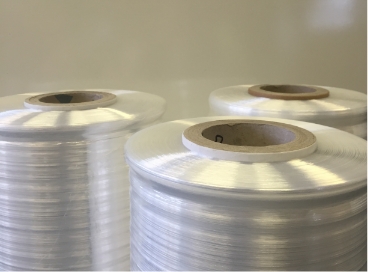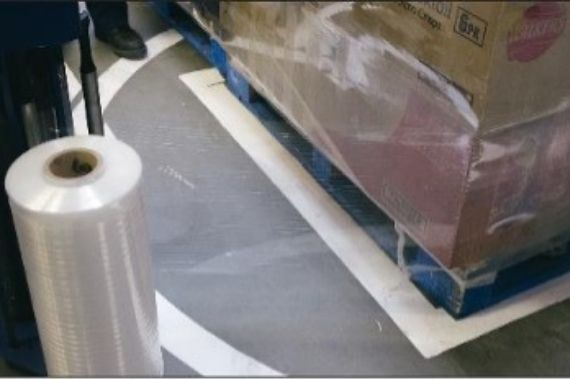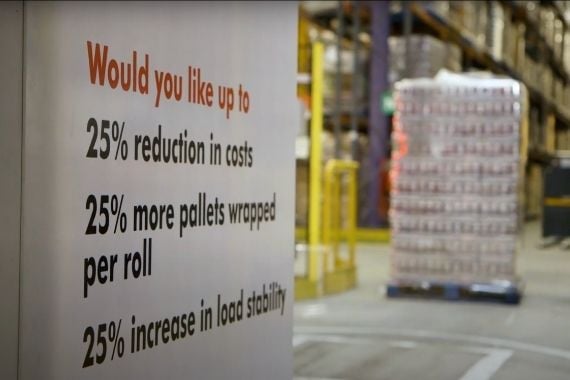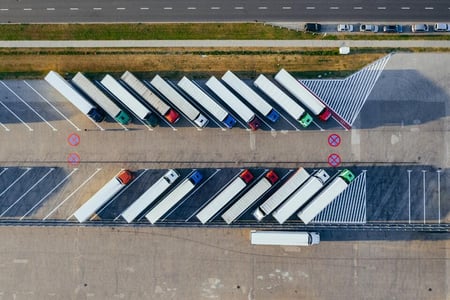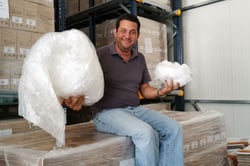"What is the best stretch film available?" is a question that is often asked to me and my colleagues, but it is really difficult to answer.
Why?
In this blog, I hope to be able to provide you with some answers to help you select the best stretch film for you.
How do I choose a stretch film?
Firstly let's address why there is not just one clear winner.
Each warehouse application is slightly different, and therefore the requirements for the stretch films are slightly different. At one end of the scale, you may have a perfectly square, very lightweight pallet - similar to what you would find at a corn snack manufacturer. On the other extreme, you would have something like cylindrical bottles with a tapered neck, filled with liquid, which don’t quite fill the pallet perimeter and are stacked three layers high.
It is impossible for one stretch film to be the best option for both cases.
|
Pallet wrap comparison |
Light & square |
Round & heavy |
|
Pallet weight to control in transit |
30kg |
900kg |
|
Natural load stability (unwrapped) |
Good |
Poor |
|
Resistance to wrap pressure |
Poor |
Good |
|
Technical difficulty to wrap |
Easy |
Hard |
I believe we supply a selection of the best stretch films on the market, but I can say hand on heart that there isn’t one single film that in test conditions would come out best in class on these two pallet types.
Pallet one is:
- A static load (won’t move in transit)
- Filled the pallet perimeter, so no sharp edges to contend with
- Cannot take much wrapping pressure, but also doesn’t need to
Pallet two is:
- A dynamic load (the liquid will move around in transit)
- Doesn’t fill the pallet to the edge, meaning we have a challenging inboard load to wrap
- Can take high wrap pressure, but needs to as the load requires a lot of securing to safely arrive at the customer
Pallet one needs:
- A lightweight film that can be stretched to the max and will apply light but consistent pressure without deforming the boxes
Pallet two needs:
- A heavier film to cope with the sharp corners on the wooden pallet and be able to stabilise the liquid in transit. The film cannot be overstretched as it needs to retain good elastic memory to cope with the moving load.
Here is just one example of why there is no such thing as the best stretch film available.
What is the best pallet wrap for me?
This is a much better question. Our whole testing philosophy is built around exploring this with our customers and potential customers.
We go through some very deliberate stages of understanding, benchmarking, testing, and recommending. Many companies that do not see the benefit of spending time on this process will do what we call long-distance diagnosis.
This would be the same as your local Doctor shouting a prescription at you when you got out of your car in their car park. Just because you have gone to the doctors they cannot possibly know what is wrong with you just by you arriving in the car park.
The same is true when you decide you want to explore new packaging suppliers. You call or meet with a company and they immediately tell you what you need from their limited range of options to achieve cost reduction, plastic reduction, increased load stability….. pick any one.
Our approach is different.
Understanding
Whenever we embark on a new project we need to understand what the end goal is.
- Are you looking to achieve cost reduction, plastic reduction, and increased load stability?
- What issues have you had in the past?
- Is there time pressure on the wrapping operation?
- Do you have a product that cannot handle any more pressure during the process?
- Are you able to increase wrapping pressure significantly, but your current film cannot handle it?
- Do you have environmental targets for plastic and carbon in the warehouse?
- What are your expectations of cost impact on this project?
Once we clearly understand your priorities, we can get to work.
Benchmarking
We need to know what you are doing right to get your pallets to your customer in a satisfactory way. We benchmark a range of parameters such as time, load stability, wrap efficiency, cost per pallet, the weight of plastic etc.
Testing
Now for the fun part! After understanding the desired outcomes, and how your product moves through your warehouse to your customers, we are ready to offer suggestions. Typically we will bring between 2-4 films to site to trial with you. These films are presented without prejudice - the best film for us is the one that delivers the best results for you.
After the tests, the results will be presented to you in a table. Here you can compare the films side by side and review the features and benefits of each.
Recommendations
From the test day, you may have two films that offer results similar to your desired outcome. In this case, we would recommend an extended trial of one week to one month per film, depending on your operation. Testing is good, but you should live with these films in real-world everyday business operations. All the while collecting feedback from your people and checking the results achieved during the testing day in everyday operation.
This way, you can be sure that switching films is going to deliver the desired outcome and not cause any operational issues.
Unfortunately, there isn’t a "one size fits all" for every business. However, for us, this approach is the best way to get the best film for you.
